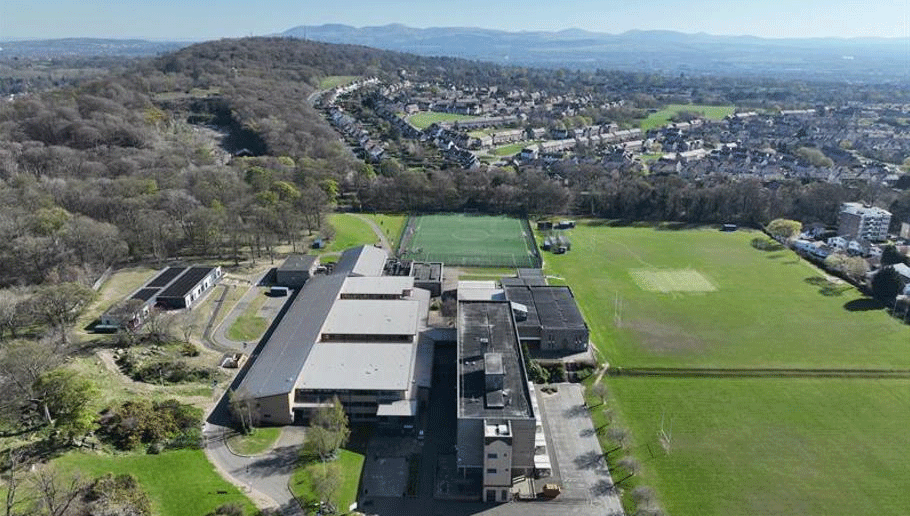By Sidhi Mittal
Copyright edie

The strategy aims to align Amey’s infrastructure construction and maintenance with the UK’s environmental priorities, including the Government’s Industrial Strategy 2025 and its legally binding commitments to restore nature and support a low-carbon economy.
It is also intended to enhance the company’s long-term resilience.
The company manages a wide portfolio of assets, including roads, highways, bridges and buildings. Many of these sites provide potential links for wildlife within developed landscapes, positioning the brand to play a role in creating ecological connectivity across the UK.
The strategy draws on evidence from a biodiversity footprint assessment across Amey’s business units. Procurement data from 2023–24 covering £1.74bn in spend across 480 categories was mapped against the Encore materiality tool.
The analysis identified aggregates, plant, waste treatment, construction, fertilisers and chemicals as key areas of impact. Site-specific assessments examined proximity to protected areas, natural lands and water-related risks, with findings guiding the prioritisation of resources.
An employee survey conducted in January 2025 indicated broad support for the approach: Nearly 88% of respondents said biodiversity was personally important, 81% viewed it as important for the company, and 71% felt that having a ‘nature-positive’ strategy was very important.
Amey’s ESG director Emily Davis said: “Protecting biodiversity has always been important to us, but this strategy gives Amey a clear framework to deliver measurable impact.”
The framework is built around four pillars: Ecological protection and risk management; nature-positive thinking; achieving biodiversity benefit; and jointly addressing both climate change and biodiversity loss.
Ecological protection and risk management
Amey plans to embed ecological considerations from the earliest stages of projects, integrating biodiversity screening and risk assessments into design and planning.
The strategy highlights training for employees and suppliers on managing risks associated with protected species, invasive species and pollutants.
Location-based assessments will be used to identify and mitigate indirect impacts such as light pollution, noise and water contamination.
Audits will be undertaken by ecologists or health, safety, environment and quality teams, while dedicated ecologists will be seconded into operational units to support integration across projects.
Nature-positive thinking
Training senior leaders in nature-based solutions and promoting biodiversity awareness across the organisation is another key focus in the strategy.
Amey plans to invest in digital tools and research to improve monitoring, particularly around invasive species. Employees will be encouraged to volunteer in nature conservation and restoration activities, with links made between biodiversity engagement and wellbeing.
Amey also intends to share case studies and best practices, establish biodiversity champions on contracts, and set expectations for suppliers to align with its biodiversity commitments.
Achieving biodiversity benefit
On-the-ground actions will include habitat creation and restoration within major contracts, with baseline surveys and enhancement plans guiding works.
Opportunities to provide green buffers and corridors are being explored, along with targeted interventions for specific species. The strategy also sets out plans to support clients in meeting biodiversity net gain (BNG) requirements and to investigate the potential for BNG credit sites.
Biodiversity Action Plans will be developed for major projects.
Other long-term goals include adopting Science-Based Targets for Nature to measure progress in species richness, habitat coverage and ecological outcomes.
Combining action on climate and biodiversity
Recognising the links between climate change and biodiversity, Amey’s strategy calls for the wider adoption of nature-based solutions in infrastructure projects.
Green infrastructure networks will be developed to improve climate resilience and ecological connectivity, while operational practices will focus on reducing waste and chemical use.
Water management frameworks, including rainwater harvesting and greywater recycling, will be introduced in water-stressed areas.
Amey also intends to adopt habitat management practices that enhance biodiversity and sequester carbon, with biodiversity footprinting incorporated into procurement processes.
Progress will be reported through frameworks such as the Taskforce on Nature-related Financial Disclosures (TNFD).
A responsibility to act
The strategy is also backed by external commitments such as the Nature Positive Business Pledge, the Rebuilding Nature alliance and collaboration with the Supply Chain Sustainability School.
David added: “As one of the UK’s largest infrastructure providers, we have a responsibility to design and deliver projects that enable nature to thrive.
“By embedding nature-positive principles into everything we do, we can create infrastructure that serves communities, protects the environment, and is fit for the future.”



